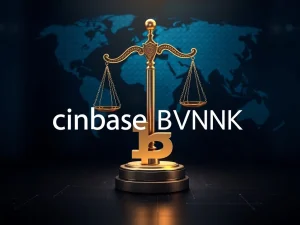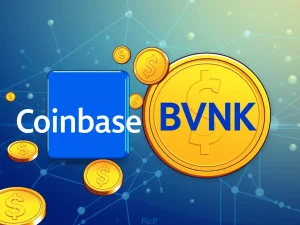SEC Crypto Regulation: Promising Shift Towards Clear Digital Asset Rules

Get ready for a potential shift in how the U.S. Securities and Exchange Commission (SEC) approaches digital assets. SEC Chair Paul Atkins recently shared insights into the future of SEC crypto regulation, indicating a move away from an enforcement-heavy approach towards establishing clear rules of the road for the industry. This is significant news for anyone involved in or watching the cryptocurrency space.
A Promising Shift in SEC Crypto Regulation
During a recent SEC roundtable on tokenization and digital assets held on May 12, SEC Chair Paul Atkins expressed a positive outlook on the potential of blockchain technology. He stated that blockchain ‘holds promise’ for enabling ‘new kinds of market activities’ that current regulations might not fully address. More importantly, Atkins signaled a notable change in the Commission’s strategy under his leadership.
He welcomed ‘a new day at the SEC,’ emphasizing that future policymaking would prioritize ‘existing rulemaking, interpretive, and exemptive authorities’ rather than relying on ‘ad hoc enforcement actions.’ This approach contrasts with the ‘regulation by enforcement’ method that characterized the tenure of former SEC Chair Gary Gensler, which drew criticism from some industry participants.
Exploring the Potential of Blockchain Tokenization
Chair Atkins highlighted that blockchain tokenization could lead to a ‘broad swath of novel use cases for securities.’ He drew an analogy between the evolution of securities and the progression of audio formats – from vinyl to digital software. Just as digital formats enhanced compatibility and led to new business models like streaming, tokenization has the potential to create more interoperable and accessible financial markets.
This concept is already gaining traction. Major asset management firms like BlackRock and Franklin Templeton have launched tokenized funds. Additionally, platforms like Robinhood are exploring building blockchain infrastructure to enable trading of tokenized securities for retail investors in Europe. The potential benefits of tokenization include:
- Faster settlement times
- Reduced reliance on traditional financial infrastructure
- Improved accessibility for a wider range of investors
- Increased liquidity for historically illiquid assets
Establishing Clear Guidelines for Crypto Securities
A key focus for the SEC under Atkins will be developing a ‘rational regulatory framework for crypto asset markets.’ This includes setting ‘clear rules of the road’ for the issuance, custody, and trading of crypto assets, while still working to prevent illegal activities. A particular priority will be establishing ‘clear and sensible guidelines’ for identifying and regulating assets that qualify as crypto securities.
The SEC also aims to make it easier for brokers to offer a wider variety of investment products, potentially allowing for the mixing of securities and non-securities on their platforms. This focus on clarity and tailored rules represents a significant step towards providing the industry with the certainty it has long sought.
The Growing Landscape: Real World Assets and Stablecoins
The discussion around tokenization extends beyond traditional securities to encompass real world assets crypto (RWA). According to RWA.xyz data from May 12, $22.6 billion worth of real-world assets are currently onchain, showing a 7.6% increase in the past 30 days. This figure excludes stablecoins, which are often backed by real-world assets like Treasury bills.
Stablecoins themselves represent a massive segment of the digital asset market. As of May 12, the total stablecoin market cap stood at $243 billion, according to DefiLlama data. Tether’s USDt (USDT) alone accounted for $150.6 billion of this total. The sheer scale of these tokenized assets underscores the growing importance of developing appropriate regulatory frameworks.
Conclusion: A New Chapter for Crypto Regulation?
SEC Chair Paul Atkins’ recent comments suggest a potentially more constructive and predictable era for crypto regulation in the United States. By prioritizing rulemaking and seeking to establish clear guidelines for blockchain tokenization, crypto securities, and the broader digital asset market, the SEC appears to be taking steps to foster innovation while maintaining investor protection. The focus on clarity for real world assets crypto and stablecoins indicates an acknowledgment of the diverse and growing nature of the onchain economy. This shift is a promising development that the industry will be watching closely.







